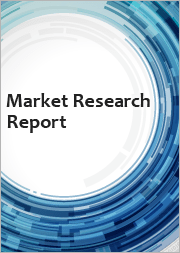
|
시장보고서
상품코드
1568898
미국의 연료전지 전기 트럭(FCET) 부문 CO2 배출량 라이프 사이클 평가(2024-2040년)Assessment of CO2 Emissions Life Cycle in the Fuel Cell Electric Truck Sector, United States, 2024-2040 |
||||||
클린 수소 생산원을 채택하면 FCET 당 CO2 배출량이 43% 감소하고 지속 가능한 운송의 혁신적인 성장이 예상됩니다.
Frost & Sullivan은 연료전지 전기 트럭(FCET)의 이산화탄소(CO2) 배출량, 특히 미국의 트럭 산업에서 연료로 예상되는 수소를 종합적으로 분석합니다. 우리의 분석은 수소를 고려하는 근거로 시작하여 기존 연료와 비교하여 수명주기 배출을 줄일 가능성을 보여줍니다.
회색 수소에서 재생가능한 수소 공급원에 이르기까지 다양한 수소 제조 방법을 파헤쳐 각각 명확한 탄소 실적를 가지고 있음을 밝힙니다. 연료전지차의 제조와 관련된 CO2 배출량에 중점을 두어 연료전지 스택이나 수소저장탱크 등의 부품에서 배출되는 CO2량을 확인합니다. 또한 트럭의 운행 기간 동안 CO2 배출량을 예측하고 배터리 전기 트럭 및 디젤 트럭과 비교합니다.
궁극적으로 이 연구는 트럭 운송 부문에서 상당한 CO2 배출 감소를 달성하기 위해 보다 클린 수소 제조 방법으로의 전환과 차량 제조 최적화가 시급하다는 것을 강조합니다.
조사기간은 2023-2030년입니다.
목차
연료전지 전기트럭(FCET) 업계의 CO2 배출량 변모
- 왜 성장이 어려워지고 있는가?
- The Strategic Imperative 8(TM)
- 연료전지 전기트럭(FCET) 업계의 CO2 배출량에 있어서의 상위 3개 전략적 과제의 영향
성장 환경: 수소 생태계
- 수소는 미래의 연료
- 연료전지 전기 트럭의 라이프 사이클 CO2 플로우
- 수소의 다양한 제조방법
생태계
- 조사 범위
- 파워트레인 기술의 부문화
성장 발전기
- 성장 촉진요인
- 성장 억제요인
수소 제조시 CO2 배출 경로
- 주요 수소 제조방법의 분석
- 수소 제조법의 채용에 영향을 미치는 주요 요인
- 요인 1: 낮은 CO2 배출량과 준비 레벨
- 요인 2: 클린 수소 프로그램과 목표
- 요인 3: 각 주의 H2 생산의 가능성과 계획
- 캘리포니아주 H2 생산 채용 예측
- 남서부에서의 H2 생산의 채용 예측
- 텍사스 주 H2 생산 채용 예측
- H2 제조에 의한 CO2 배출의 궤적
연료전지 전기 트럭 제조시 CO2 배출 경로
- 연료전지 전기트럭의 주요부품
- 연료전지 스택
- 수소 저장 탱크
- 배터리
- CO2 배출 궤적: FCET 제조
성장 발전기: FCET 운전 시 CO2 배출 궤적: LDT
- LDT 이용 사례의 특징과 예측의 전제조건
- LDT 사이클 A 및 H-H2 소비량과 CO2 배출량
- LDT 사이클 A-H-kgCO2/마일
성장 발전기: FCET 운전 중 CO2 배출 궤적: MDT
- MDT 이용 사례의 특징과 예측의 전제조건
- MDT 사이클 A 및 H-H2의 소비량과 CO2 배출량
- MDT 사이클 A-H-kgCO2/마일
성장 발전기: FCET 운전 시 CO2 배출 궤적: HDT
- HDT 이용 사례의 특징과 예측의 전제조건
- HDT 사이클 A
- HDT 사이클 H
- HDT 사이클 A-H-kgCO2/마일
내연 기관차, BEV, FCEV의 CO2 배출 트레일 비교
- LDT: ICE, BEV, FCEV 비교(A&H 사이클)
- MDT: ICE, BEV, FCEV 비교(A&H 사이클)
- HDT: ICE, BEV, FCEV 비교(A&H 사이클)
중요 포인트
- 상위 3개 항목
성장 기회
- 성장 기회 1: CO2 배출량 추적
- 성장 기회 2: 배터리 및 연료전지 제조를 위한 지역별 수직 통합
- 성장 기회 3 : 수소 인프라 확대
모범 사례 인증
- 모범 사례 평가
Frost Radar
- Frost Radar
다음 단계
- 성장 기회의 장점과 영향
- 다음 단계
- 도표 일람
- 면책사항
Adoption of Clean Hydrogen Production Sources Will Drive Transformational Growth in Sustainable Transportation Due to Reductions in CO2 Emissions by 43% Per FCET
In this study, Frost & Sullivan offers a comprehensive exploration of the carbon dioxide (CO2) trail of a fuel cell electric truck (FCET) by investigating the carbon emission implications of FCETs, particularly with focus on hydrogen as a prospective fuel for the trucking industry in the United States. Our analysis begins with the rationale for considering hydrogen, highlighting its potential to mitigate life cycle emissions as compared to conventional fuels.
We delve into various hydrogen production methods, ranging from grey hydrogen to renewable sources, each carrying distinct carbon footprints. Emphasis falls on the CO2 emissions associated with manufacturing fuel cell vehicles, pinpointing significant contributions from components including fuel cell stacks and hydrogen storage tanks. Furthermore, we project total CO2 emissions throughout the operation of a truck, drawing comparative insights with its battery electric and diesel truck counterparts.
Ultimately, this study underscores the urgency of transitioning to cleaner hydrogen production methods and optimizing vehicle manufacturing to achieve substantial CO2 emission reductions in the trucking sector.
The study period is 2023 to 2030.
Table of Contents
Transformation in CO2 Emissions from the Fuel Cell Electric Truck Industry
- Why is it Increasingly Difficult to Grow?
- The Strategic Imperative 8™
- The Impact of the Top Three Strategic Imperatives on the CO2 Emissions of Fuel Cell Electric Truck (FCET) Industry
Growth Environment:Hydrogen Ecosystem
- Hydrogen is the Fuel of the Future
- Life Cycle CO2 Flow of a Fuel Cell Electric Truck
- Different Methods of Producing Hydrogen
Ecosystem
- Research Scope
- Powertrain Technology Segmentation
Growth Generator
- Growth Drivers
- Growth Restraints
CO2 Emission Trail During Hydrogen Production
- Analysis of Major Hydrogen Production Methods
- Key Factors Impacting Adoption of H2 Production Methods
- Factor 1: Lower CO2 Emissions & Readiness Levels
- Factor 2: Clean Hydrogen Programs and Targets
- Factor 3: States' H2 Production Potential & Plan
- Adoption Forecast of H2 Production in California
- Adoption Forecast of H2 Production in the Southwest
- Adoption Forecast of H2 Production in Texas
- CO2 Emission Trail from H2 Production
CO2 Emission Trail During the Manufacture of a Fuel Cell Electric Truck
- Major Components of a Fuel Cell Electric Truck
- Fuel Cell Stack
- Hydrogen Storage Tanks
- Battery
- CO2 Emission Trail: Manufacture of an FCET
Growth Generator: CO2 Emission Trail During Operation of an FCET: LDT
- LDT Use Case Characteristics and Forecast Assumptions
- LDT Cycle A & H-H2 Consumption and CO2 Emissions
- LDT Cycle A to H-kgCO2 Per Mile
Growth Generator: CO2 Emission Trail during Operation of an FCET: MDT
- MDT Use Case Characteristics and Forecast Assumptions
- MDT Cycle A & H-H2 Consumption and CO2 Emissions
- MDT Cycle A to H - kgCO2 per Mile
Growth Generator: CO2 Emission Trail during Operation of an FCET: HDT
- HDT Use Case Characteristics and Forecast Assumptions
- HDT-Cycle A
- HDT-Cycle H
- HDT Cycle A to H-kgCO2 Per Mile
CO2 Emission Trail Comparison between ICE Vehicles, BEVs, and FCEVs
- LDT: ICE, BEV, and FCEV Comparison (Cycle A & H)
- MDT: ICE, BEV, and FCEV Comparison (Cycle A & H)
- HDT: ICE, BEV, and FCEV Comparison (Cycle A & H)
Key Takeaways
- Top 3 Takeaways
Growth Opportunity Universe
- Growth Opportunity 1: CO2 Emissions Tracking
- Growth Opportunity 2: Geographic-specific Vertical Integration for Battery and Fuel Cell Manufacture
- Growth Opportunity 3: Hydrogen Infrastructure Expansion
Best Practices Recognition
- Best Practices Recognition
Frost Radar
- Frost Radar
Next Steps
- Benefits and Impacts of Growth Opportunities
- Next Steps
- List of Exhibits
- Legal Disclaimer



















